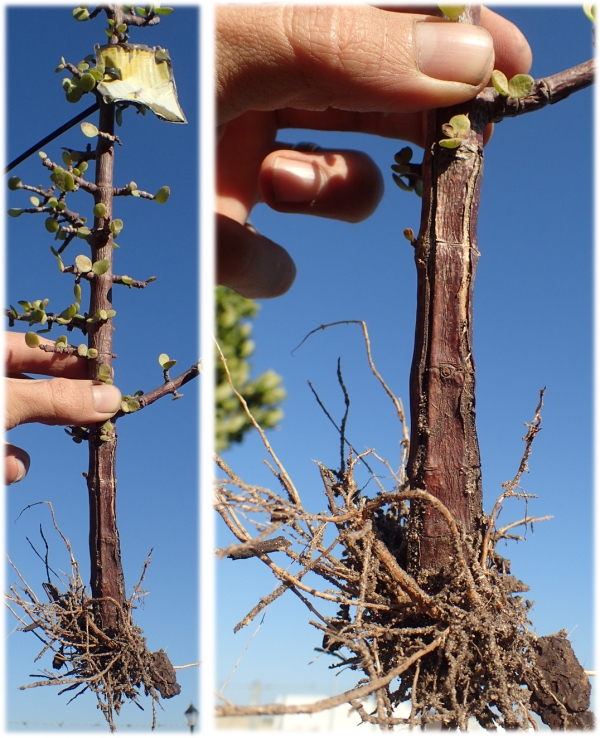We had five treatments:
- Control, where the truncheon was cut and planted with no addition damaging.
- Vertical slits, where two shallow vertical slits were cut (quite shallow: <0.5 cm) for ~10 cm length-ways along the stem ending at the base where using the sharp blade of a pair of secateurs.
- Horizontal slits, where a number of horizontal slits were cut (also shallow) cross-ways across the stem.
- Peeling, where the sharp secateur-blade was used to shallowly peel (or skin) the outer bark, and,
- Deep gouging, where deep cuts were gouged into the stem.

And the overall results are summarised below with photos of single replicates.
1. Control: no roots along the stem
1. Control: no roots along the stem
 |
2. Vertical (or longitudinal cuts): no roots along the stem
However, there was some swelling at the base with more (visually assessed) root biomass.
3. Horizontal (or perpendicular cuts): no roots along the stem
4. Scraping: no roots along the stem
5. Vertical (or longitudinal cuts): hooray! roots along the stem
Rooting was consistent across stems with gouges, but not every gouge developed roots. Nonetheless, those that did not develop roots still healed over.
So, the deep gouging makes a substantial contribution to stimulating rooting. The great thing about these results is that they've been replicate by an independent experiment!
Thankfully, Yondela Norman — an Honours student at Rhodes University — conducted a completely independent and different experiment on rooting (at the same time as we were!) and also found that the deep gouges substantially promoted root growth. So, my predictions in this earlier blog were correct. It's great when the data actually supports a hypothesis.




No comments:
Post a Comment